5 Low-Prep and Quick Brain-Activating Science Warm Up Activities
One way to get class started on the right foot is by giving your students science warm up activities. Not only does it free you to answer questions, collect papers, or take attendance, but more importantly, it gives students the review or curiosity their brains need. So let’s talk more about science warm up activities!
In this post
We will go over the purpose of science warm up activities and some examples you can use in your classroom right away. We will also talk about grading and collecting bell work (or bell ringers).
Be sure to get your free guide 7 Daily Must-Do Routines to Run Your Science Classroom Like a Pro today!

Disclosure: This post may contain some affiliate links for your convenience. As an Amazon Associate I earn from qualifying purchases with no cost to you.
What are science warm up activities?
Science warm up activities are quick questions or activities that your students complete at the beginning of class. They are usually about 3-10 minutes long, depending on what you choose and if you go over them with the class.
Students can complete warm up activities on a paper, in their notebooks, online, or even on a sticky note. Many times, I like to use scratch paper that I cut in half or into fourths for a quick response.
After students complete the activity, it is a good idea to go over the answers or discuss them together.
What is the main purpose of warm up activities?
One might say the main purpose of science warm up activities is for classroom management. While that is extremely important and possibly true, I want to offer an idea that may be more important when it comes to learning.
The purpose of warm up activities is to have students review material to help them make neural connections in their brains and to get their attention when they are learning something new.
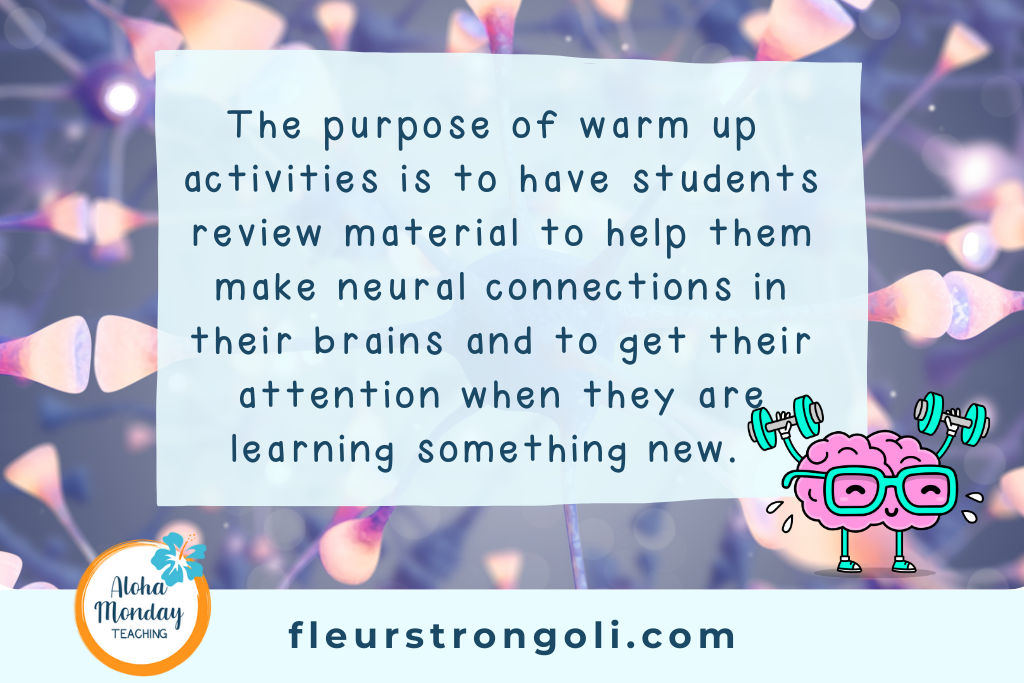
Through review, we can help students create neural connections. We want students’ brains to make neural links and we want it to be faster. We can help with this by giving students repeated and deliberate practice.
It is also recommended that we revisit information within 24-48 hours, which is why I like to use review material as my bell work.
We also want to get students’ attention. The reticular activating system (RAS) is a bundle of nerves in our lower brain. It filters information that deems necessary for our brains. Since our brain is meant to keep us alive, it looks for novelty, threat, and relevance. This will give it relevance.
We want to activate this part of the brain when we are beginning class or a lesson. We can use phenomena, images, videos, questions, problems, and more to activate the RAS.
Finally, we want students’ brains to release more dopamine rather than cortisol (stress hormone). One way to do this is by giving them tasks that are fun or get them working with others. When we have students start with an activity that is low-stress and they are able to work with a partner or small group, then we can achieve this.
Here are 5 science warm up activities ideas
Science Bell Ringers
You can use a worksheet, like my weekly review sheets or something similar. The purpose here is mainly for review.
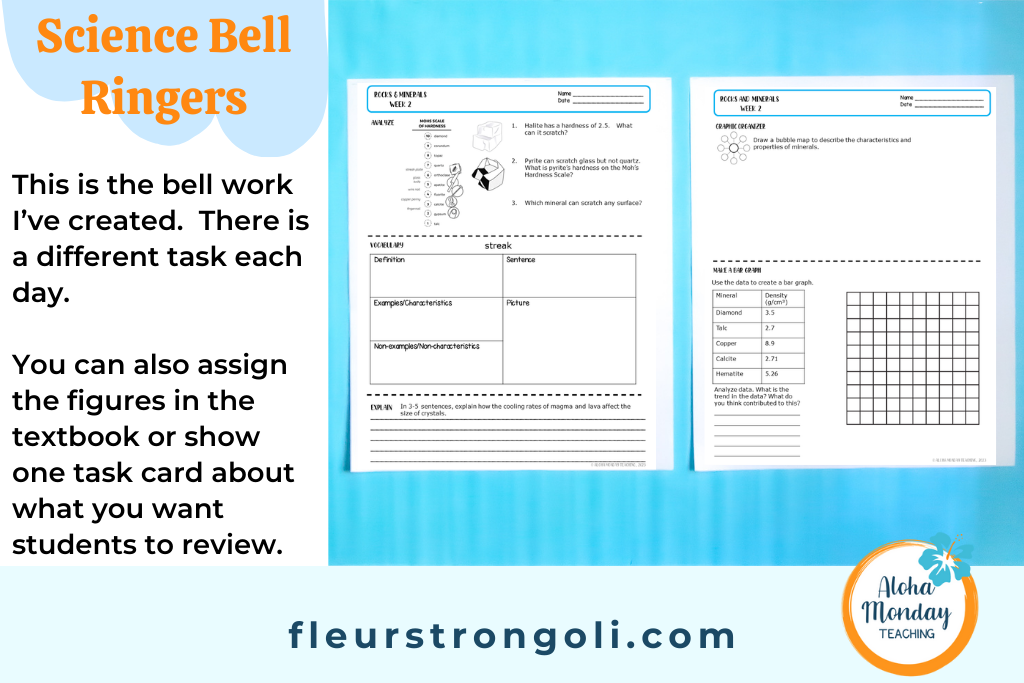
Here’s how I use the bell work I’ve created for my students. On Monday, I put the copies on the whiteboard so students can get one. You can also show the Power Point slides each day and have them respond in their notebooks.
Each day, they work on one section that I quickly check and we go over in class. On Monday, they complete the Analyze section, Tuesday they do vocabulary, Wednesday they write an explanation, Thursday they make a graphic organizer, and on Friday they create a bar or line graph.
You can also use small sections of your Science textbook, like the figures with a small task. For example, I will post on my welcome slide “Complete Figure 2 on page 68 in your science textbook.” That will be their bell work for that day.
Task cards come in handy for bell work too. You can simply post one task card that students respond to. Here is a collection of task cards for science classrooms. And you can read more about using task cards in your classroom in this blog post, 5 Engaging and Easy Tips on How to Use Task Cards.
Daily Science Warm Up Questions
You can post a question each day. These questions would be for a review of concepts or general questions about topics they would like to learn more about. Students can answer it in their notebooks, on a sheet of paper, or a sticky note. This is a great way to make sure students understand the concept and you can quickly clear up any misconceptions.
Science Warm Up Group Activities
Get their brains engaged with a more hands-on, fun cooperative learning activity. You could have students sort cards or terms together. This will get them thinking of what they have learned and expanding it to how concepts or terms connect to one another. I’ve enjoyed giving them a set of cards and having them come up with the categories.
You could also have groups work together to solve a problem or answer questions. They can use whiteboards to show you their responses or take turns sharing during a class discussion.
You can even bring a short STEM activity for them to complete as a warm up that is related to the concept you are teaching.
Phenomena
Using phenomena, or an observable event, is a great way to start class. This will build curiosity in their brains. This is especially helpful at the beginning of your unit, or to revisit your anchor phenomena. You can find some phenomena ideas here.
When you show students an image or video of a phenomenon, have them write down some questions. A simple way to do this is to have students make a two-column chart and label each column, “I notice” and “I wonder.”
Students should share with each other and you can keep a class list of notices and wonders. I like to track their wonders, and then revisit them during and at the end of the unit. That way we can see if anything was answered. This can also lead to students doing their own explorations and learning based on what they wonder.
Post a Problem
To encourage problem solving, critical thinking, and creativity, you can start class with a problem. Post a problem in the school, community, or world that students can think about. They can write down possible solutions for the problem. Be sure students understand that they should write down any solution, as this is one of the Science and Engineering practices. Read more about this on the NGSS website.
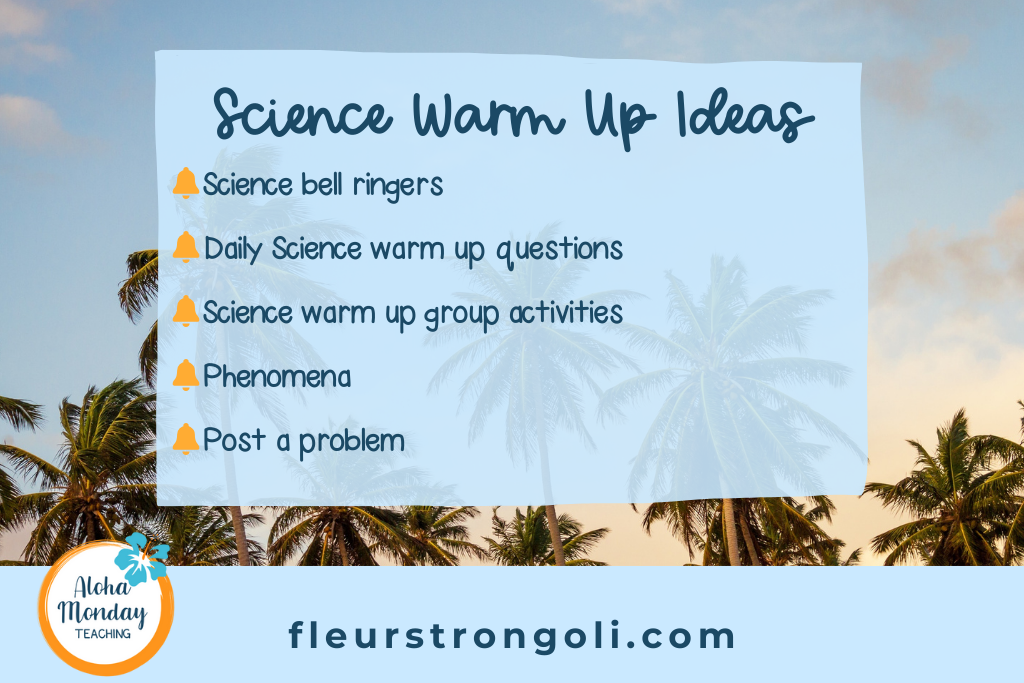
Grading and Collecting Bell Work
There are different ways you can grade bell work, or make sure students are completing it without actually taking a grade for it. This might depend on what type of bell work you choose.
Here are some ideas that I have done when it comes to bell work.
-I walk around the classroom checking their work. Check their work to make sure they are on track, and can quickly clear up any misconceptions. I typically put a star on their bell work if it is on the weekly worksheet or in their notebooks. This helps me keep track of completion and that I’ve checked their work.
-Students can work in pairs or their lab groups to complete bell work. Again, walk around to make sure students are completing the task.
-After all or the majority of bell work is completed, have students share their answers with each other. Then share with the whole group.
You can collect bell work to grade it. I don’t collect all the bell work students complete. I usually collect bell work that is on a worksheet or in their notebooks.
When I use the bell work I created, students keep the worksheet until Friday. At the end of the week, I can grade it quickly because I’ve already checked it, put a star on their work, and discussed it with the class.
When students answer questions in their notebooks for bell work, I collect their notebooks so I can grade their work. Again, I have already starred in their notebooks, so I know that what they’ve written is correct or on track.
Note: I do take off points when students are missing stars. They still receive partial credit for completing it.
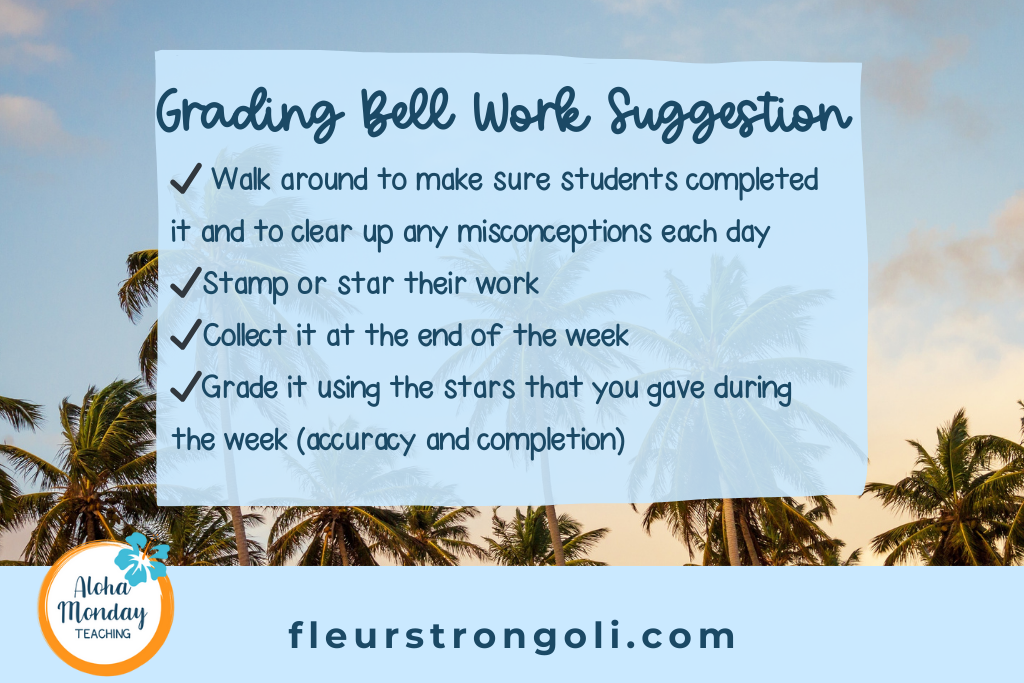
Wrap up
We went over what science warm up activities are and reasons why we start our class periods with it. Our main purpose is for learning and growing their brains through this short assignment each day. We also talked about different types of bell work you could use in your classroom. There are ways to check their work, discuss with a partner or whole group, and collect and grade the science warm up activities.
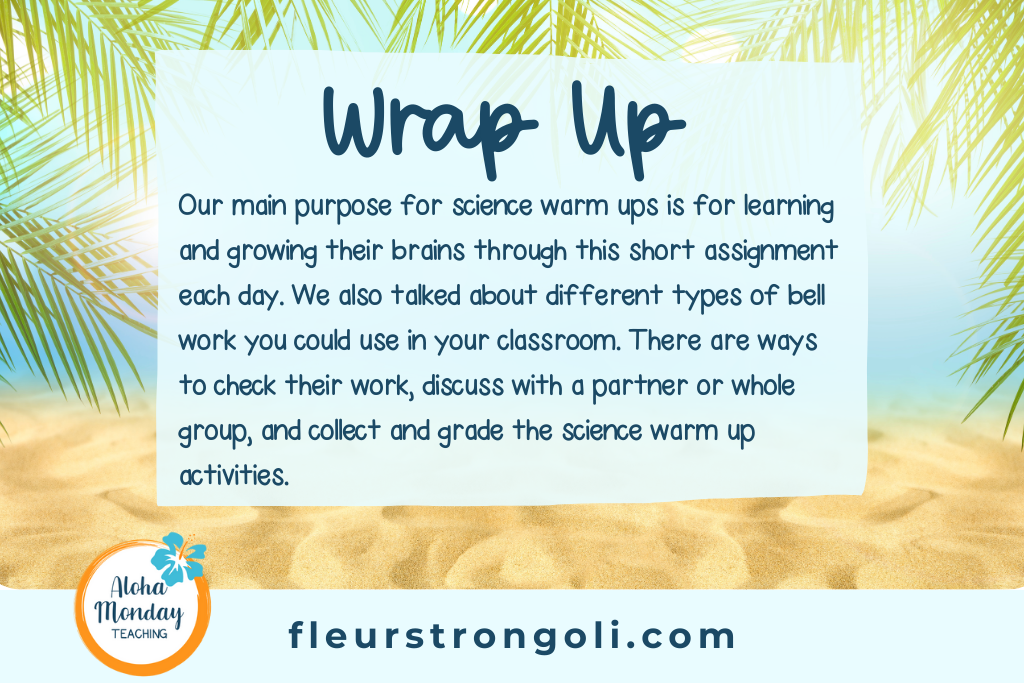
Your turn
What are your normal science warm up activities that you use in the classroom? Do you have new ideas or will you try something new? Reply and let me know!
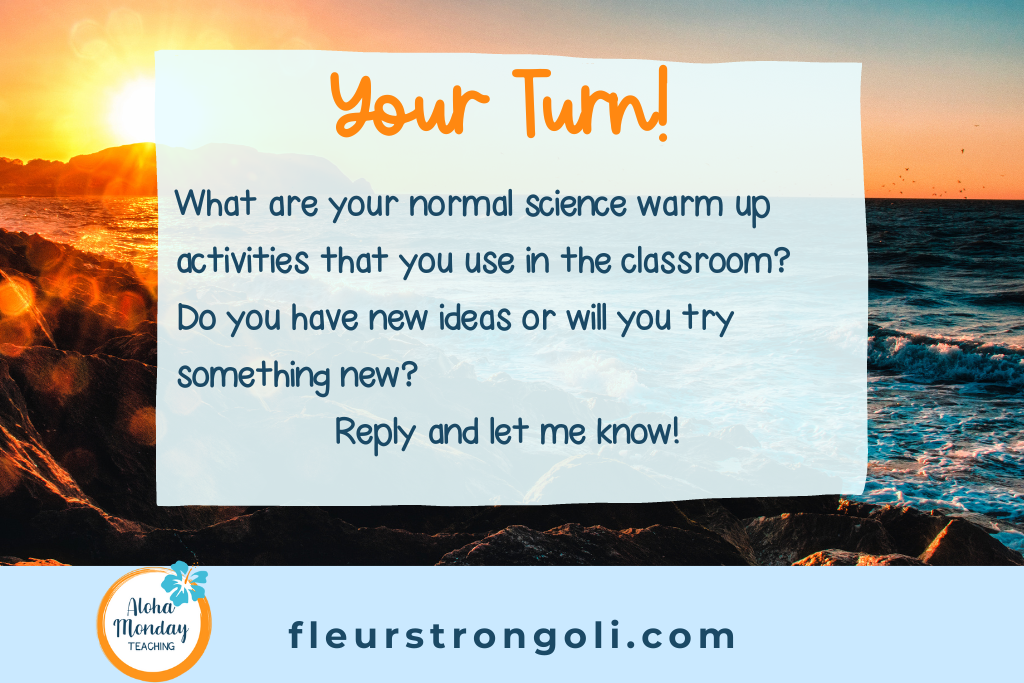
Links to Blog Posts and Resources
Collection of Bell Work/Ringers
7 Daily Must-Do Routines to Run Your Science Classroom Like a Pro


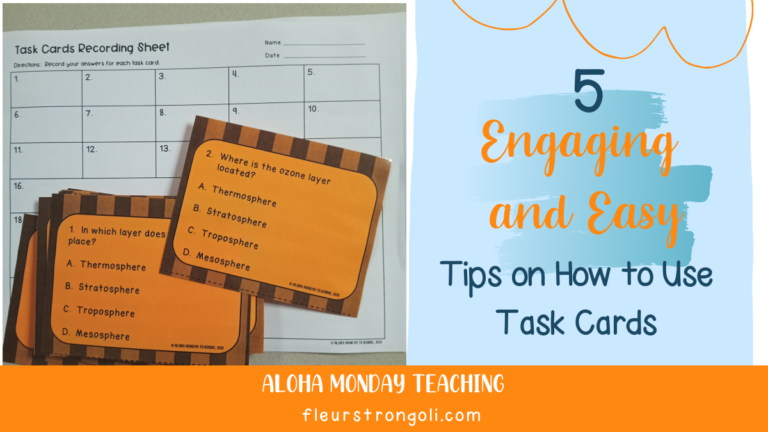

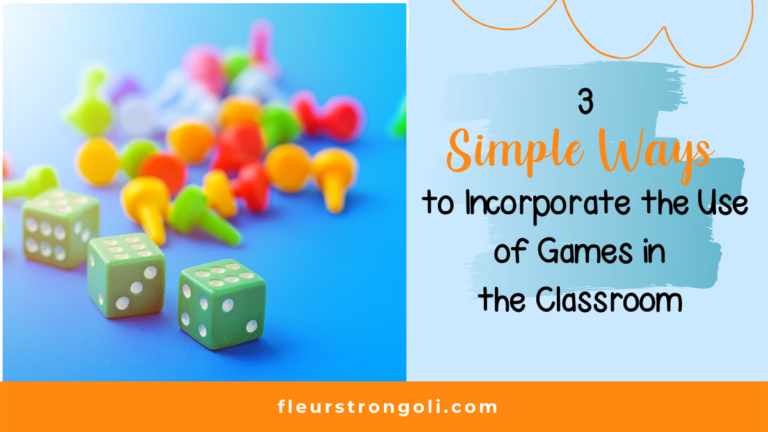

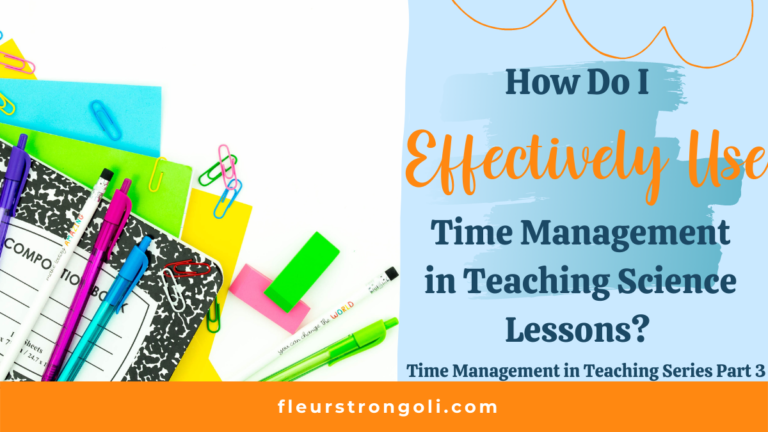

One Comment